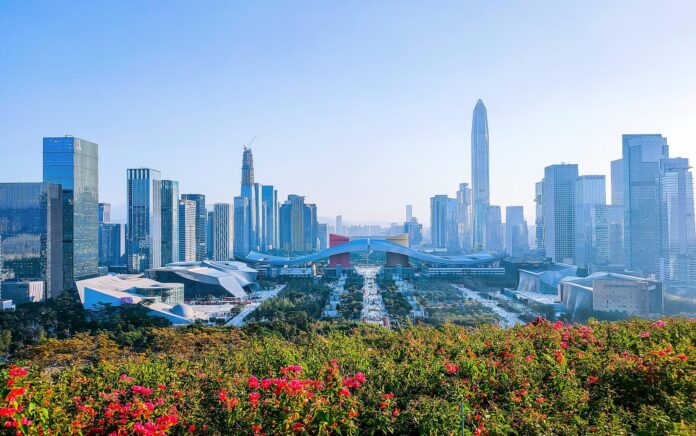Latin America is part of the Far Periphery of China, however, this region has gradually become a relevant area for the foreign policy of the People’s Republic of China.This phenomenon is related to the rise of China in the last five decades: gradually and uninterruptedly, the Sino-Latin American relationship developed, beginning with diplomacy in the 1970s, continuing with trade in the 1980s, advancing towards education, cultural and scientific in the 90s; and continuing in the last 20 years towards the technological, health, military and strategic aspects.
This process was reinforced by the existence of similar perspectives on how the international order and economic complementarity should be: China needs raw materials that Latin America has in abundance, while China has a surplus of capital and industrial overcapacity, of the which our region lacks.
This economic reality shows the insufficient industrial development and dependence on the primary sector of most Latin American economies, which are aspects that must be corrected.
Likewise, this process was favored because the US relegated its ties with Latin America in recent decades and, therefore, gradually lost its presence in the region. Through protectionist policies and the postponement of trade agreements, the White House has helped not only China but also the European Union (and to a lesser extent Russia and India) to develop a multidimensional presence in the region.
The convenience of Latin America establishing itself as a supplier of food to China was clearly evidenced with the organization of the First Meeting of Ministries of Agriculture of China and Latin America and the Caribbean in 2013. A year later, the ChinaCELAC Forum was established. , which is attended by the respective Foreign Ministers. And in that year 2014 three Latin American countries that produce industrial inputs, energy and
food (Brazil, Argentina and Venezuela) were recognized as “integral strategic partners” of the People’s Republic.
Chinese companies look to Mexico for the opportunity to dodge US tariffs.
In 2016, the Asian country published the second “white paper” on its relations with Latin America and the Caribbean, which defined Beijing’s policy towards the region. A year later, in the context of the First Belt and Road Forum for International Cooperation, it was announced that the Belt and Road initiative would be extended to our region. So far, some twenty Latin American countries have formally adhered
to the initiative.
This process was favored because the US relegated its ties with Latin America in recent decades and, therefore, gradually lost its presence in the region
The Belt and Road Initiative has generated interest in Latin America, as it encompasses infrastructure projects (such as the construction of railways, highways, ports, pipelines, and housing), as well as commercial, financial, technological, and even civilizing dialogue. However, for the Belt and Road initiative to be effectively beneficial, it will be essential that the counterparts agree on favorable projects for the respective countries, which do not consist exclusively of the granting of credits by China that are destined for the acquisition of Chinese supplies.
Likewise, the projects should be based on the development of investments and technology transfer, the association with local companies, the use of Latin American labor and inputs, the performance of environmental impact assessments, etc. All these developments of the Sino-Latin American relationship have a profound strategic influence, which is why they affect US interests. For this reason, the strategic competition between Washington and Beijing affects our region.
Let us remember that already in October 2018, the US Secretary of State, Mike Pompeo, described China’s expansion in Latin America as “predatory economic activity”. However, when in early 2020 the world witnessed the
spread of Covid-19, most Latin American nations received help from the People’s Republic of China in health and medical matters, in the form of equipment or advice. China stood out in the concert of nations for the assistance provided, becoming a pole of global cooperation.
The Belt and Road Initiative has generated interest in Latin America, for encompassing infrastructure projects (such as the construction of railways, highways, ports, pipelines and housing)
Seen from China’s side, from the development of trade, investment, financial assistance, technology transfer, health care and infrastructure development, Beijing has managed to build more presence in Latin America than any other state other than China. USA in contemporary history. And from the point of view of Latin America, the growing link with the People’s Republic has brought about some consequences: (1) attenuate the pre-eminence of the United States, (2) diversify economic partners, (3) achieve a boom in the export of commodities, (4) renew the sources of financing and technology transfer, and (5) expand the sources of
military equipment. However, this analysis would be incomplete if it did not include other effects, namely: (1) the primary export model was deepened, (2) the development of local industry was affected, and (3) friction with the US was generated.
Latin American governments face the challenge of reducing the health and economic effects of the pandemic, to which is added the dilemma of what international position to assume, as a region that is located in the natural area of influence of the United States and that has China as one of its top three trading partners, foreign investor, lender, infrastructure builder and technology transferor.
For Latin American countries, reducing dependence on the United States can be achieved by diversifying international political and economic ties. However, if relations between Washington and Beijing evolve into open conflict, the region could be forced to choose an ally. Consequently, ties with China represent an increasingly sensitive diplomatic challenge for
Latin American countries. Given this scenario, Latin America could use that window of strategic opportunity that would allow it to avoid alignment, seeking to maximize benefits and reduce risks.















Add Comment